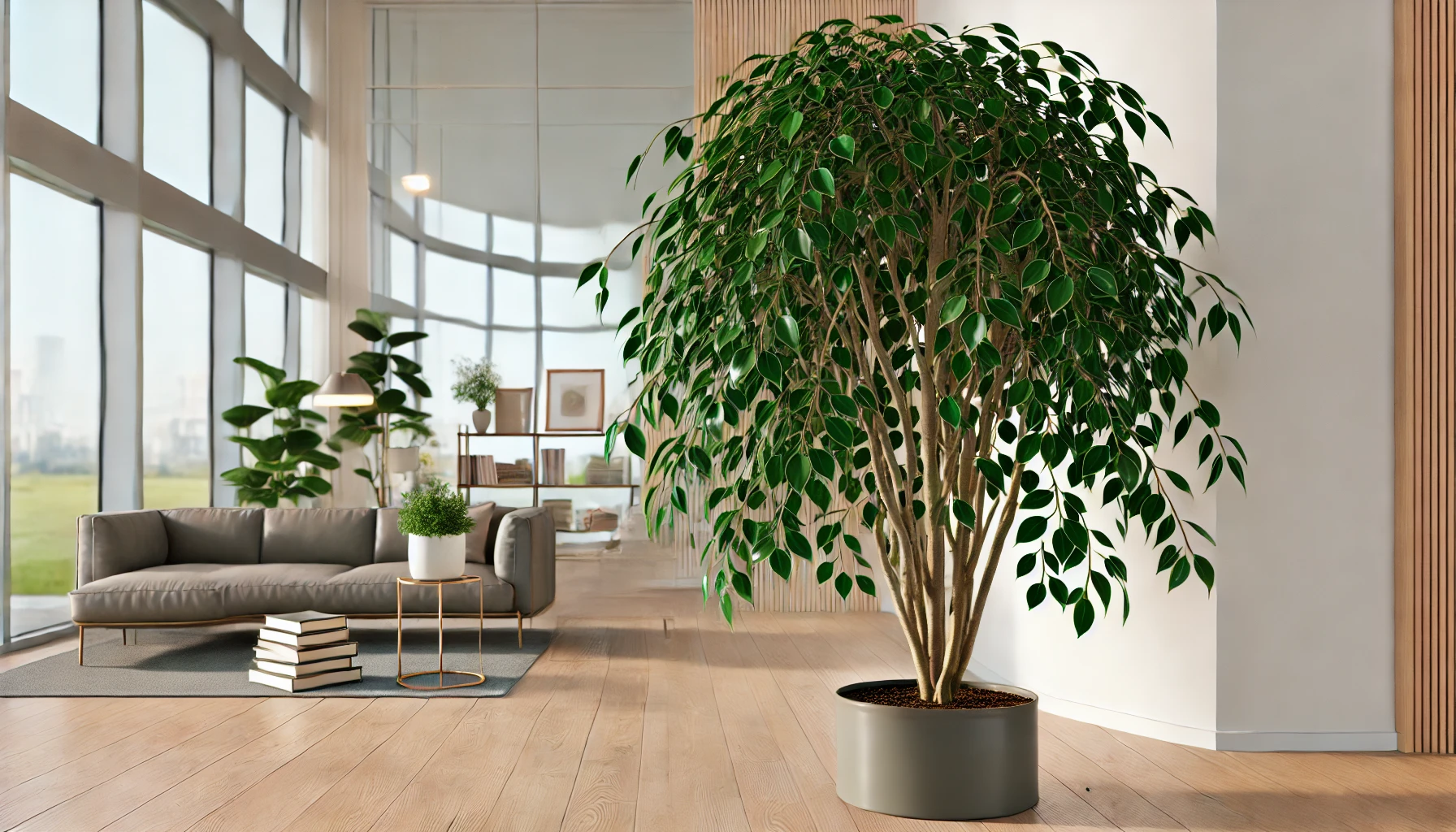
The Weeping Fig, formally known as Ficus benjamina, is a popular perennial plant known for its arching branches and glossy, oval-shaped leaves. This plant can grow up to 10 feet (3 meters) tall indoors, making it a stunning focal point in any room. Its graceful, weeping habit gives it a unique charm that adds a touch of elegance to your home.
History and Ideal Growing Conditions
Native to Southeast Asia and Northern Australia, the Weeping Fig thrives in tropical and subtropical regions. It has been a popular indoor plant for decades due to its adaptability and attractive appearance. In its natural habitat, it can grow into a large tree, but indoors, it remains more compact. The Weeping Fig prefers bright, indirect light but can tolerate some direct sunlight. It thrives in warm, humid conditions and prefers temperatures between 65-75°F (18-24°C).
Pet Safety and Toxicity
The Weeping Fig is toxic to pets. If ingested, it can cause oral irritation, drooling, vomiting, and difficulty swallowing in cats and dogs.
Safe Alternatives for Pet Owners
For pet owners, consider safer alternatives like the Boston Fern (Nephrolepis exaltata) or the Parlor Palm (Chamaedorea elegans). Both plants are non-toxic and offer lush, green foliage.
Best Practices for Caring for Your Weeping Fig
While the Weeping Fig is relatively easy to care for, it does require some attention to maintain its health and appearance.
Watering and Humidity
Water your Weeping Fig when the top 1-2 inches (2.5-5 cm) of soil are dry. This plant prefers consistent moisture but is susceptible to root rot if overwatered. It’s important to let the soil dry out slightly between waterings. High humidity is beneficial, so consider using a humidifier or placing the plant on a pebble tray with water to increase moisture in the air.
Soil, Light, and Temperature
The Weeping Fig thrives in well-draining soil, such as a standard potting mix with added perlite or sand to improve drainage. It prefers bright, indirect light but can adapt to lower light conditions. However, insufficient light may cause leaf drop. Keep the plant in a stable environment with temperatures between 65-75°F (18-24°C) and avoid placing it near drafts or sudden temperature changes.
Fertilizing
During the growing season, typically spring through summer, feed your Weeping Fig with a balanced, water-soluble fertilizer every 4-6 weeks. Reduce or stop fertilizing in the fall and winter when the plant’s growth naturally slows.
Common Problems and Remedies
The Weeping Fig can sometimes be finicky, especially when it comes to changes in its environment. Common issues include leaf drop, pests like spider mites and scale, and root rot. Leaf drop often occurs due to changes in light, temperature, or watering habits. To minimize leaf drop, try to maintain a consistent environment. For pests, use insecticidal soap or neem oil, and keep the plant’s leaves clean by wiping them with a damp cloth. To prevent root rot, ensure proper drainage and avoid overwatering.
Pruning Your Weeping Fig
Pruning is essential to keep your Weeping Fig healthy and well-shaped. The best time to prune is in early spring, just before the growing season begins.
Tools Needed
Use clean, sharp pruning shears or scissors. Sanitize your tools with rubbing alcohol before and after pruning to prevent the spread of disease.
Identify Areas to Trim
Focus on removing any dead, diseased, or yellowing leaves. You can also trim back branches that are growing out of bounds or to shape the plant as desired. Avoid removing more than one-third of the plant at a time to prevent stress.
Shape the Plant
Prune to maintain the desired shape and size. The Weeping Fig can be pruned into a tree form, with a single trunk, or left to grow more naturally, with multiple stems.
Post-Pruning Care
After pruning, monitor the plant for signs of stress, such as leaf drop or wilting. Adjust watering as needed, and keep the plant in its preferred light and temperature conditions to promote recovery.
Propagation and Benefits
The Weeping Fig can be propagated through stem cuttings. Take a cutting with at least one node, let it dry for a day, and then place it in water or directly in soil. New roots should develop within a few weeks. Beyond its aesthetic appeal, the Weeping Fig also purifies the air, removing toxins such as formaldehyde and benzene, making it a beneficial addition to any home.
Final Thoughts
The Weeping Fig is an elegant and graceful houseplant that, with proper care, can thrive for years. Its lush foliage and weeping branches make it a striking addition to any indoor space. Whether you’re a seasoned plant enthusiast or a beginner, the Weeping Fig offers beauty and charm that can transform your living area into a green oasis.



